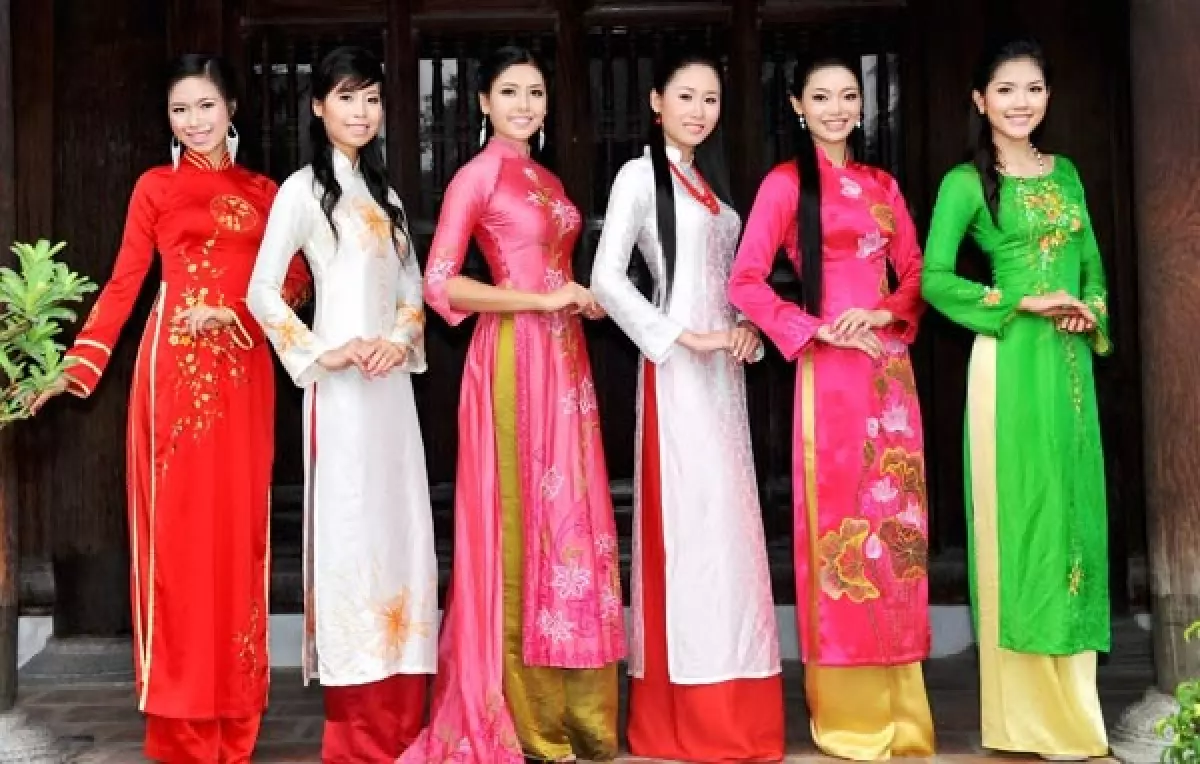An Introduction to the World of Ao Dai
The enchanting beauty of women dressed in ao dai never fails to leave a lasting impression on visitors to Vietnam. Whether it's young girls gracefully riding their bikes to school or older ladies making a striking entrance at a restaurant, the ao dai has the power to flatter every figure. This traditional Vietnamese attire consists of a body-hugging top that flows over wide trousers, creating an exquisite silhouette. While the ao dai may have undergone some modifications over the years, its timeless elegance remains unchanged.
 Ao Dai Vietnam
Ao Dai Vietnam
The Perfect Fit: Tailoring Grace and Comfort
One of the most remarkable aspects of the ao dai is the individualized tailoring that ensures a perfect fit for each wearer. The trousers are designed to reach down to the soles of the feet and cascade along the floor. Despite being a long robe, the ao dai is remarkably comfortable to wear. Tailors pay careful attention to the freedom of movement, making it an ideal choice for daily wear. Synthetic or silk fabrics are preferred for their ability to resist wrinkles and quick drying properties, adding to the practicality of this elegant uniform.
Colors that Tell a Story
The choice of color in ao dai not only reflects personal preferences but also carries symbolic meaning. Young girls typically wear pure white ao dai, symbolizing their purity and innocence. As they grow older, unmarried girls transition to soft pastel shades. It is only married women who adorn themselves in ao dai featuring vibrant and rich colors, often paired with white or black trousers. However, one rarely comes across the ao dai in places where manual labor is practiced. In recent times, the ao dai has experienced a resurgence in popularity, becoming the preferred dress code for formal occasions, as well as a staple for female students and office staff.
A Journey through Time
While the ao dai has deep roots in Vietnamese culture, its modern form can be traced back to the early 20th century. In 1930, the visionary Vietnamese fashion designer, Cat Tuong, made significant design changes, lengthening the top to reach the floor and enhancing the bodice's fit to accentuate the wearer's curves. The button line was elegantly moved from the front to the left side, giving the ao dai its iconic look. Subsequent alterations, such as the introduction of raglan sleeves by tailors Tran Kim and Dung in the 1950s, further refined the design and created the contemporary ao dai that we know today.
A Vision of the Future
In the present day, the ao dai continues to evolve as designers experiment with various necklines, sleeve styles, and color patterns. The length of the ao dai has been adjusted, with many opting for a shorter hemline that falls just below the knee. Boat and mandarin necklines are popular choices, but more daring alterations, such as low scooped necklines or off-the-shoulder designs, are gaining traction as Vietnamese women embrace fashion experimentation. Access to new and vibrant fabrics has opened up a world of possibilities, resulting in dazzling and unique ao dai designs.
An Ageless Symbol of Beauty and Grace
When it comes to elegance, grace, and charm, few outfits can rival the timeless allure of the ao dai. Its ability to transcend age and showcase the beauty of Vietnamese women is unparalleled. Whether it is worn as a symbol of tradition or as a fashion statement, the ao dai continues to capture the hearts of both locals and visitors alike. So the next time you find yourself in Vietnam, take a moment to appreciate the beauty and sophistication of the ao dai, a cultural treasure that embodies the spirit of Vietnamese beauty.
Acknowledgments to:
Image Source: Ao Dai Vietnam


















